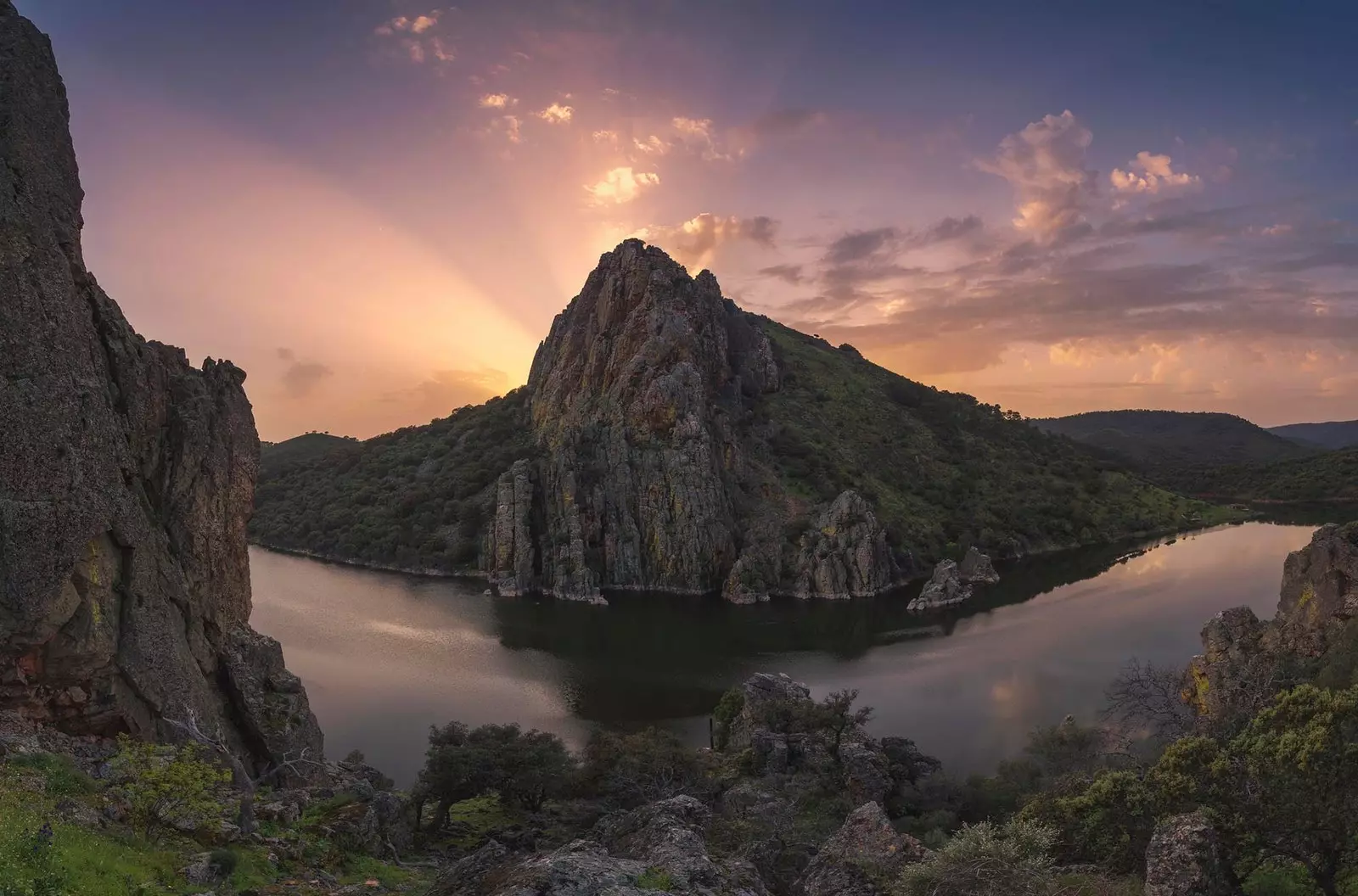
Peña Falcón, one of the most attractive points of our trip
National Park since 2007, Biosphere Reserve since 2003, one of the best preserved wild spaces in Europe and one of the areas of greatest ornithological interest in Spain. If these are not enough reasons to get lost in the Monfrague Park , driving lovers have one more: a spectacular and twisty road, perfect to do it behind the wheel or on the handlebars of a motorcycle.
The Monfragüe Park is in the province of ** Cáceres **, located between Navalmoral de la Mata, Plasencia and Trujillo. It is not very large, since it occupies little of the less than 18,000 hectares that extend between the mountains that form when the Tagus and Tiétar rivers cross it, but it concentrates areas of exuberant vegetation, reservoirs and streams.
And, in addition, it is home to an impressive population of black storks, Egyptian vultures, imperial eagles, eagle owls and vultures, that have made this enclave a place of pilgrimage, for decades, for ornithologists from all over the world.
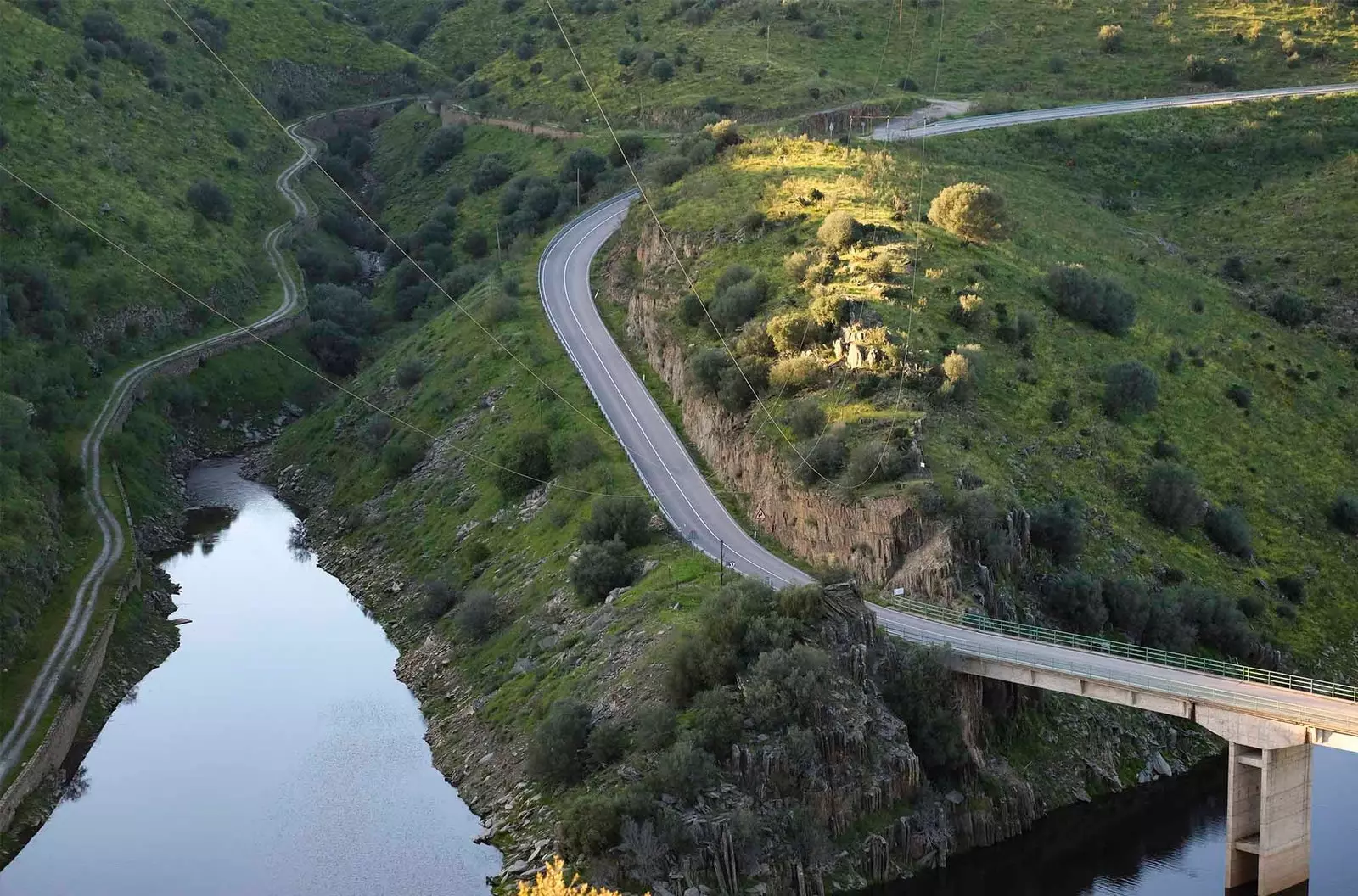
The road that runs through Monfragüe
ROADS AND ASPHALT
The park is crossed by a series of paths, of greater or lesser length, perfectly signposted, for excursions on foot or by bicycle. However, what we are interested in is plotting the curves of the road EX-208 , which crosses the Park from north to south.
This is really the most important route, although it has a deviation to the east that connects with the EX A1 motorway - between Navalmoral de la Mata and Plasencia - which starts at the A5, which connects Madrid with Lisbon bordering Trujillo and Cáceres.
We opted for a route from south to north, starting from Trujillo . A good starting point, because the town, crowned by an imposing castle that was used to recreate the house of the Lannisters in Game of Thrones, has a good range of accommodation. They are good options Tourism Parador , built on an old convent; the ** Santa Marta Palace **, next to the imposing square, or the Hotel Izan , with a beautiful covered patio from the 16th century.
After a good breakfast with products from the land -ham and cheese-, we set off. When we move away from Trujillo in the direction of Torrejon el Rubio along the EX-208, the castle bids us farewell with an impressive image, without modern elements, which make us feel in another era. The outskirts of the town are a succession of orchards delimited by superimposed stone walls, with some grazing cows, and a little further on, we see large berrocales, the stones that make up the landscape in this area.
They have their best exponent in The Barruecos of Malpartida de Cáceres , also the scene of Games of Thrones.
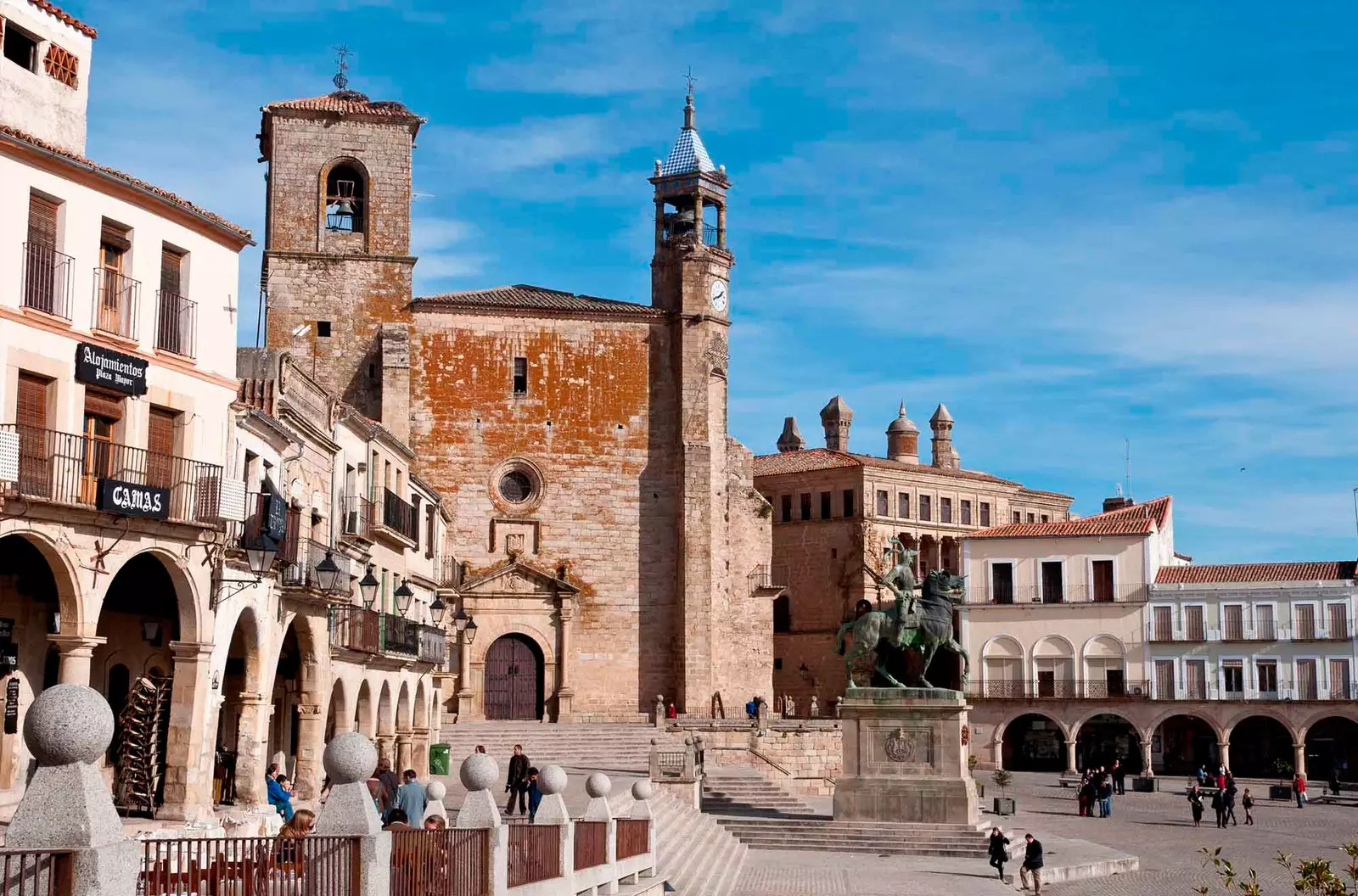
Trujillo, an excellent starting point
A STRAIGHT IN THE DEHESAS
After passing under the A5 motorway, the one that we have already mentioned that connects Madrid with Lisbon bordering Trujillo and Cáceres, the landscape gradually transforms into infinite meadows , with some scattered oaks, and populated by pigs, lambs and some cows, as well as cranes in the water areas.
Until Torrejón el Rubio, gateway to the Monfragüe Park, We will travel about 40 kilometers of road, basically a straight line, with elevation changes marked by the orography. It is a good time to enjoy the panorama.
we cross Bishop's Village and the Tozo and Almonte rivers. The six central eyes of the bridge that cross the latter give us an idea that things can change here in a short time, and the stream that we see now, even though it is autumn, usually becomes a good river. From this point on, the road begins to climb, warning us that we are approaching the Park, while on the right we are flanked by the foothills of the Sierra de Gredos.
We cross Torrejón el Rubio, which has a wide range of rural houses and restaurants . Here also comes the road that connects with Cáceres, about 50 kilometers away: the EX390.
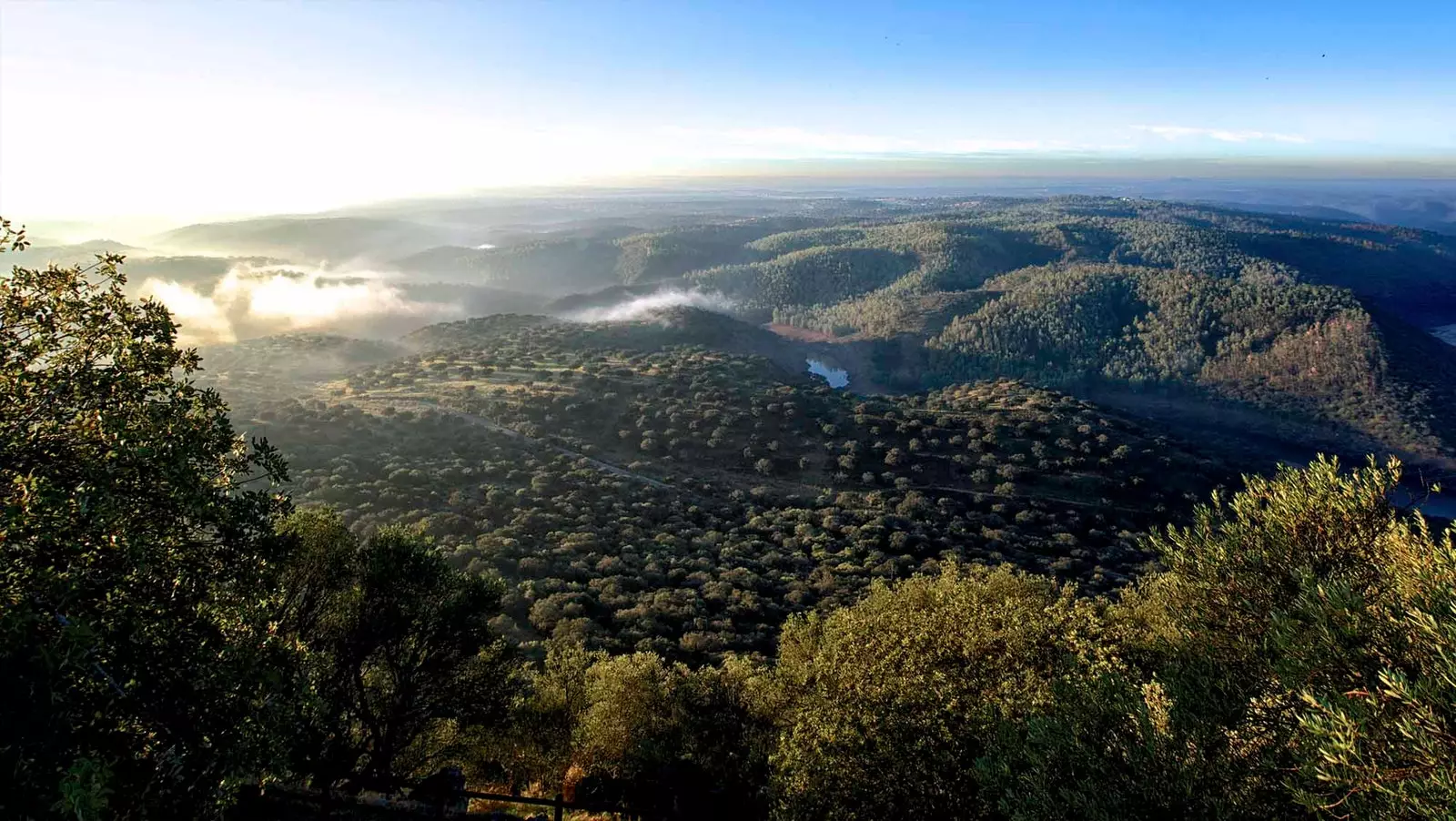
Monfragüe, an unforgettable landscape
Just seven kilometers from Torrejón el Rubio, the Natural Park 'officially' begins. We notice it right away because the metal railings are painted to imitate a piece of wood. Bikers beware: no changes have been made, and the feet that hold them are a Mortal trap in case of falls.
The road goes up and down with linked curves to the right and left, some of them 180 degrees ; a full turn to climb to a higher level. The firm is very good , but the road is narrow and without hard shoulders, except for some sharp bends where a small stone hard shoulder is created in order to maintain the environment.
During the nearly 20 kilometers that the path runs through the Natural Park, speed is limited to 60 km/h, and it is forbidden to use the horn so as not to disturb the animals.
The vegetation is thick and very varied. Willows can be seen in the areas closest to the streams, but also Holm oaks, olive trees, maples, ash trees, junipers, cork oaks and scrub that configure one of the best preserved Mediterranean forests. This was the nature of the peninsula in the Middle Ages.
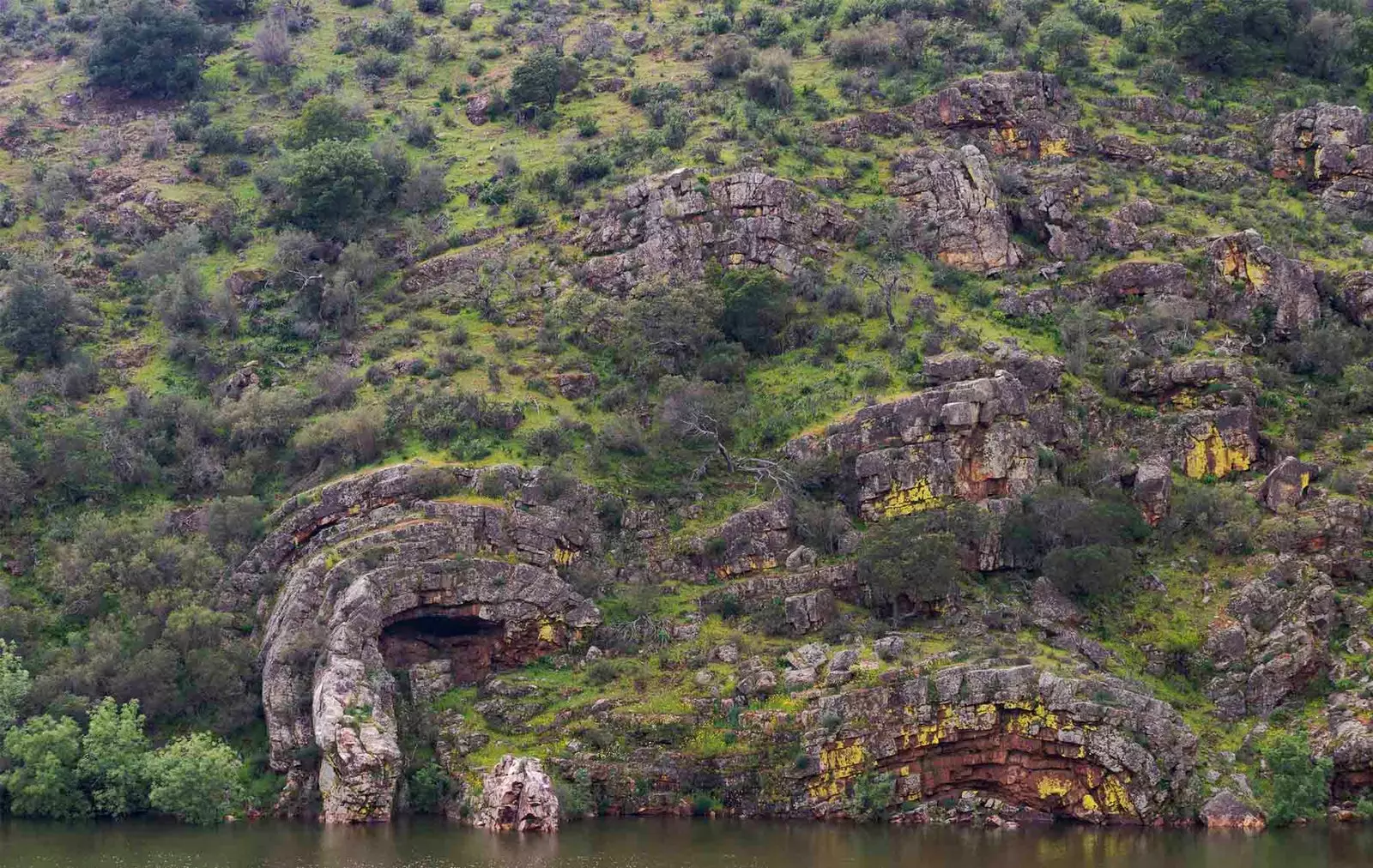
Tiétar gate, in Monfragüe
THE WATCHTOWER OF MONFRAGÜE
About 60 kilometers after our departure from Trujillo, we arrive at the castle of Monfrague . It is perfectly indicated, and at the foot of the road there is a car park. Of course, on the dates when there are many visits, you cannot drive up to the foot of the ruins, as there is only space for four or five vehicles; then, the last part of the ascent is done in a small bus.
Of the old fortress of Roman origin are two reconstructed towers, one with a pentagonal plan. A good flight of stairs allows us to access the upper part and, of course, worth. When the Arabs made the first construction, they looked for the highest point in the park with perfect views of the entire environment.
Never has the expression "bird's eye view" been so real, because from this point we can see, at our feet, the flights of the eagles flying over the reservoirs and heading for the nearby rocks where they seem to have their nests. Very close to the castle there some cave paintings and a hermitage, which can be accessed.
Legend has it that an Arab princess wanders eternally among these ruins for having fallen in love with a Christian. I don't know if there are ghosts, but what can be found when night falls is a deer or a boar walking quietly or sitting on the asphalt, so you should be careful as soon as the sun goes down.
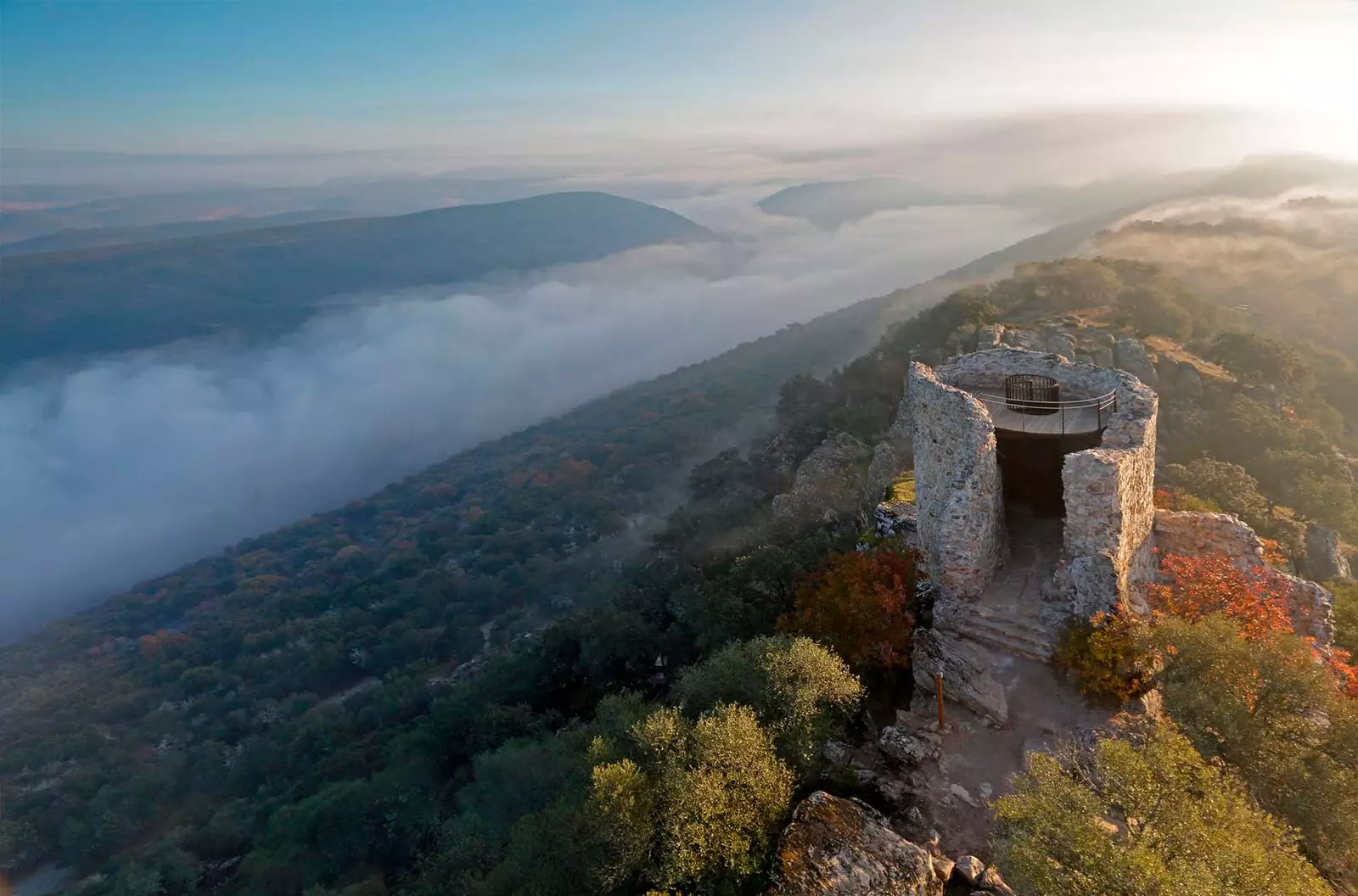
The watchtower of Monfragüe
THE FALCON ROCK
A few kilometers further on, on the left, we find a battery parking area. In this section the road is narrow, as it runs between rocky outcrops cut to the top of the water in the form of gigantic skyscrapers, so it is the only way to park to access a panoramic ride over the river Tagus.
We are in the ' Gypsy Leap ', although his real name is Pena Falcon, an enclave is perfect for seeing vultures, Egyptian vultures, eagles and other birds that have made their nests on the cliffs. At the end of this viewpoint there is a wooded area with tables, next to the so-called French Font , which is a welcome relief during the hot summer months. From here there is also a path that allows access to the castle, in a walk of about 45 minutes.
The road continues to cross the Tagus, and continues parallel to the river in a more abundant area, because the Tiétar has already dumped its water. On the right is the Cardinal's Bridge , of medieval origin, which spends much of the year submerged under water . We leave it behind along with the large stork nests, as the road continues to unfold to Plasencia where our journey ends.
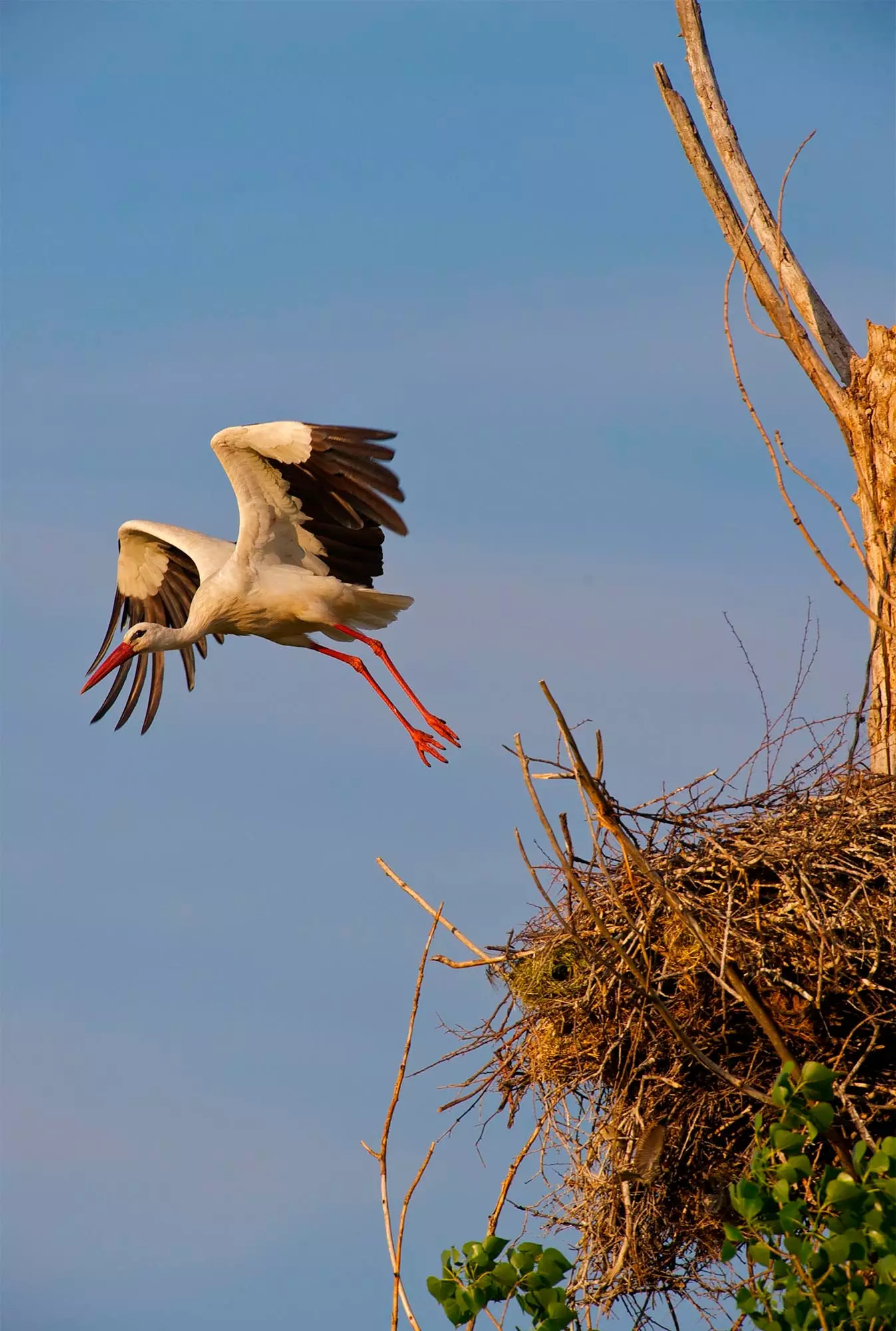
We leave the storks behind
